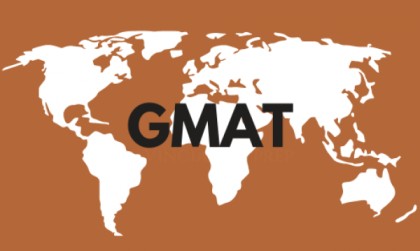Measured Building Surveys: Enhancing Construction Precision
In the realm of construction and architecture, precision is paramount. Whether it’s erecting a new structure or renovating an existing one, accurate measurements form the foundation of success. This is where Measured Building Surveys come into play, offering indispensable insights into the spatial intricacies of a building. Let’s delve into the world of Measured Building Surveys and uncover their significance in the bustling city of London.
Importance of Measured Building Surveys
Ensuring Accuracy in Construction Projects
Before laying the first brick or pouring concrete, architects and engineers rely on precise measurements to bring their visions to life. Measured Building Surveys provide comprehensive data on existing structures, enabling professionals to plan and execute construction projects with utmost accuracy.
Facilitating Renovation and Refurbishment
In a city as vibrant as London, where historical buildings stand alongside modern skyscrapers, renovation and refurbishment projects abound. Measured Building Surveys offer a detailed blueprint of these structures, guiding renovation efforts and ensuring compatibility with existing architectural elements.
Technologies Used in Measured Building Surveys
Laser Scanning
One of the cornerstones of modern surveying technology, laser scanning captures millions of data points with exceptional speed and accuracy. By emitting laser pulses and measuring their reflections, surveyors can create highly detailed 3D models of buildings, capturing even the minutest of details.
Photogrammetry
Harnessing the power of aerial photography, photogrammetry constructs 3D models by analyzing overlapping images of a structure. This non-invasive technique provides a holistic view of buildings, making it ideal for large-scale surveys and urban planning initiatives.
Remote Sensing
Utilizing satellite imagery and LiDAR (Light Detection and Ranging) technology, remote sensing offers a bird’s-eye view of buildings and their surroundings. From detecting structural changes to monitoring environmental impact, remote sensing plays a vital role in modern surveying practices.
Process of Conducting Measured Building Surveys
Initial Planning and Preparation
Before commencing a Measured Building Survey, thorough planning is essential. Surveyors identify key objectives, assess logistical requirements, and determine the most suitable methodologies for data collection.
Data Collection Phase
Armed with state-of-the-art equipment, surveyors embark on-site to capture detailed measurements of the building’s interior and exterior. From laser scanning to traditional tape measures, a myriad of tools are employed to ensure comprehensive data acquisition.
Data Processing and Analysis
Once the data is collected, it undergoes rigorous processing and analysis. Advanced software packages transform raw measurements into accurate 2D drawings and 3D models, facilitating further analysis and interpretation.
Benefits of Measured Building Surveys
Accurate Floor Plans and Elevations
Measured Building Surveys London provide architects and designers with precise floor plans and elevations, serving as the foundation for informed decision-making throughout the design process.
Detection of Structural Defects
By identifying structural irregularities and defects early on, Measured Building Surveys help mitigate risks and ensure the safety and stability of buildings over time.
Enhanced Project Management
From cost estimation to resource allocation, Measured Building Surveys streamline project management workflows, minimizing delays and maximizing efficiency.
Applications of Measured Building Surveys
Architectural Design
Architects leverage Measured Building Surveys to create tailored design solutions that seamlessly integrate with existing structures, preserving architectural harmony and historical significance.
Heritage Preservation
In a city steeped in history like London, Measured Building Surveys play a pivotal role in the preservation of cultural heritage sites, ensuring their longevity for future generations to enjoy.
Insurance Assessments
Insurance companies rely on Measured Building Surveys to assess the condition and value of insured properties accurately, facilitating fair and comprehensive insurance coverage.
Challenges and Limitations
Cost Constraints
The implementation of Measured Building Surveys can be cost-prohibitive, particularly for smaller-scale projects or budget-conscious clients.
Time Intensive
Gathering and processing survey data requires time and resources, potentially leading to project delays and increased time-to-market.
Skill and Expertise Requirements
Interpreting survey data and generating actionable insights demand specialized skills and expertise, posing challenges for organizations lacking in-house capabilities.
Future Trends in Measured Building Surveys
Integration of Artificial Intelligence
With the advent of artificial intelligence and machine learning, Measured Building Surveys are poised to become even more efficient and accurate, automating repetitive tasks and enhancing data analysis capabilities.
Advancements in Mobile Mapping
Mobile mapping technologies, such as unmanned aerial vehicles (UAVs) and handheld laser scanners, offer unprecedented mobility and flexibility, revolutionizing the way Measured Building Surveys are conducted in urban environments.
Conclusion
In the dynamic landscape of construction and architecture, Measured Building Surveys stand as a testament to precision and innovation. From ensuring the structural integrity of iconic landmarks to guiding the development of cutting-edge skyscrapers, these surveys play an indispensable role in shaping the built environment of cities like London.
FAQs (Frequently Asked Questions)
- Are Measured Building Surveys only relevant for large-scale construction projects? Measured Building Surveys can benefit projects of all sizes, from residential renovations to commercial developments.
- How long does it typically take to conduct a Measured Building Survey? The duration of a survey varies depending on factors such as the size and complexity of the building. However, most surveys can be completed within a few days to a few weeks.
- What qualifications do surveyors need to conduct Measured Building Surveys? Surveyors conducting Measured Building Surveys typically hold degrees or certifications in surveying or related fields and possess specialized training in surveying technologies.
- Can Measured Building Surveys be used for legal purposes, such as boundary disputes? Yes, Measured Building Surveys can provide valuable evidence in legal proceedings related to property boundaries and disputes.
- How often should Measured Building Surveys be conducted for existing buildings? The frequency of Measured Building Surveys depends on factors such as the age and condition of the building, as well as any planned renovations or alterations.


 English
English 

